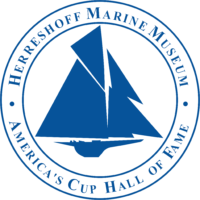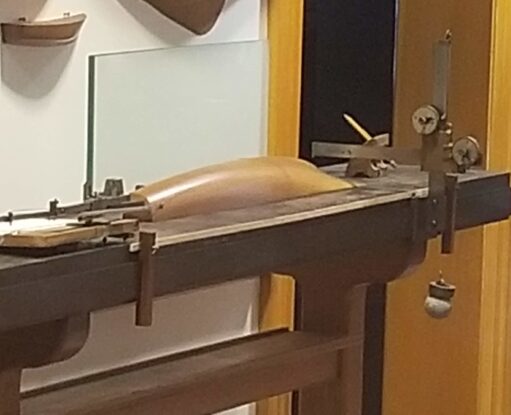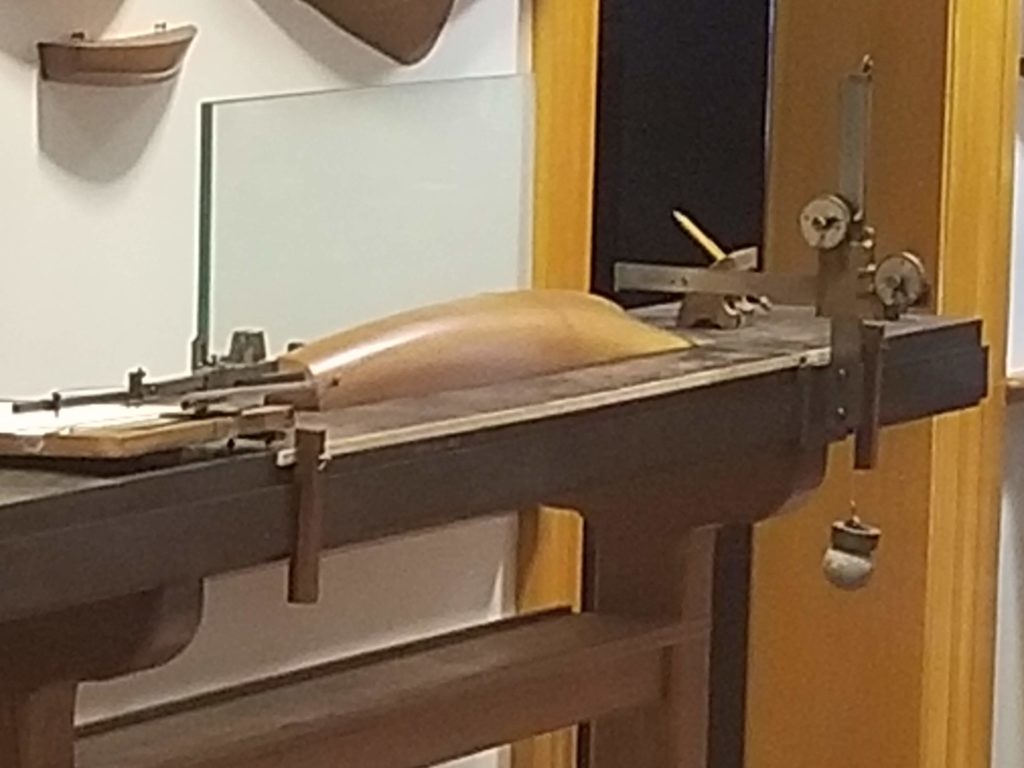Initial research completed, we were ready to start construction of launch #199 while Steve delved deeper and deeper into (non-nuclear) steam systems. As part of our mission was to faithfully recreate a HMCo streamer, we went back into Capt. Nat's process.
There are blogs by grandson Halsey Herreshoff about the half hulls and lifting of measurements from the half hull using a Brown & Sharpe three-axis coordinate measuring machine and I refer you to his postings. There is also a Maynard Bray interview for Off Center Harbor's video tour of HMM. The process is also fully described in the Museum's second floor display of the model room and replica of Capt. Nat's office. A must see!
Capt. Nat carved half hull #424 for launch #197. #199 is taken from this, one of the many launches from 26' to 35' long using this half hull. (picture 1). Measurements were then taken at each station of elevation up from a baseline and distance out from centerline. Hence, measuring w, y, and z axis. (picture 2)
Stations are placed where ribs are. Elevations are parallel lines up from a baseline. These elevations called water lines are typically 3", 6", 9", 12", 24", 36" (in scale) and etc. above the baseline as required by complexity of curves in the hull. (LWL , typically thought of as the water line- where the boat rests in the water- may or may not be one of these lofting WLs.)
These measurements are memorialized in a "Table of Offsets" of full-scale measurements; a page for each station or rib and written in boat-builder's shorthand. For example the page for station 18 (rib location) would have two columns; the left hand column being waterline heights and right hand columns being distance from centerline. "S" and "R" stand for sheer where deck meets hull and rabbet where planking meets the keel. Boat builder's notation of "2.10.7" for the sheer elevation translates to 2 feet, 10 and 7/8 inches, for example. A similar notation would be in the other column. With these two points you can plot a point on the curve for rib #18 from which we'd lay a batten against these points to recreate the shape of the rib in full size. Sometimes a "+" or "1/2" is included in the eighths number to indicate a sixteenth must be added.
These measurements were always a source of exasperation among new volunteers especially if adding and subtracting! During the lofting process one person noted the sheer was actually 2.10.6 1/2 or 2 feet 10 13/16 inches - a sixteenth off. (This was one of the very few changes noted, though really just a wiggle of the pencil by a volunteer could have resulted in the deviation.)
The Table of Offsets would also discuss any changes for subsequent boats lofted from this half hull. For example, #199's Table of Offsets discusses changes for #240 which was 30' long vs #199's 28'. This was appended at the end of #199 Offsets. Interesting because it shows how Capt. Nat would leverage and scale model 424 for launches ranging in length from 26' to 35'. It was his typical practice to re-use his models and tables of offset. For example, we'd seen during Wee Winn's restoration how he had scaled down "Bee" (#421) for "Wee Winn" (#425). Sometimes he changed length and breadth proportionally and then add or subtract some sheer; sometimes he'd change length and breadth in different proportions. To the extent that more than one 26'er was made, he could re-use molds, changing only seating arrangements etc which would be noted in draftsman's drawings - re-use, production speed, improved accuracy, and cost savings!

M0424_Steam_Tender_b.jpg


